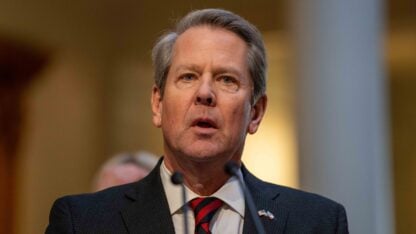Despite the coronavirus pandemic axing most 2020 plans, a sampling of some of Georgia’s most influential names in big tech are coming together to continue pursuing one goal: to make Georgia the technology capital of the East Coast.
That includes Raphael Bostic, head of the Federal Reserve Bank of Atlanta; Carol Tomé, CEO of UPS; and Bud Peterson, the former president of Georgia Tech.
Lt. Gov. Geoff Duncan told WABE that, eventually, he wants to be able to pick up a newspaper anywhere across the state and read that all Georgians can have a seat at the tech table – from smaller, agricultural towns to the heart of Atlanta’s startup hubs and tech villages.
“We’re really excited about centering our efforts around inclusive innovation,” Duncan said.
WABE’s “All Things Considered” host Jim Burress recently asked Duncan how these efforts for the “Partnership for Inclusive Innovation” plan to be inclusive in a way that has previously been exclusive.









